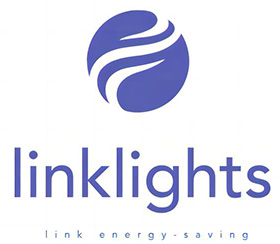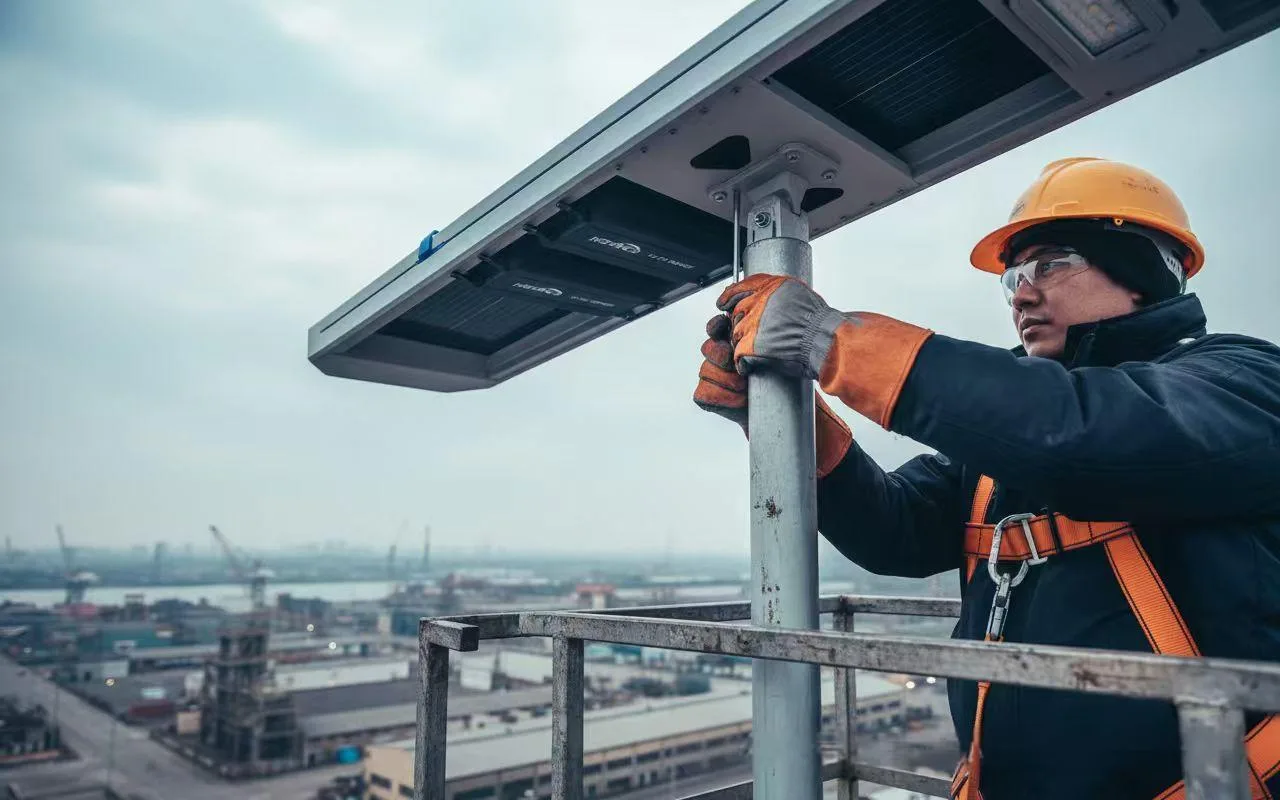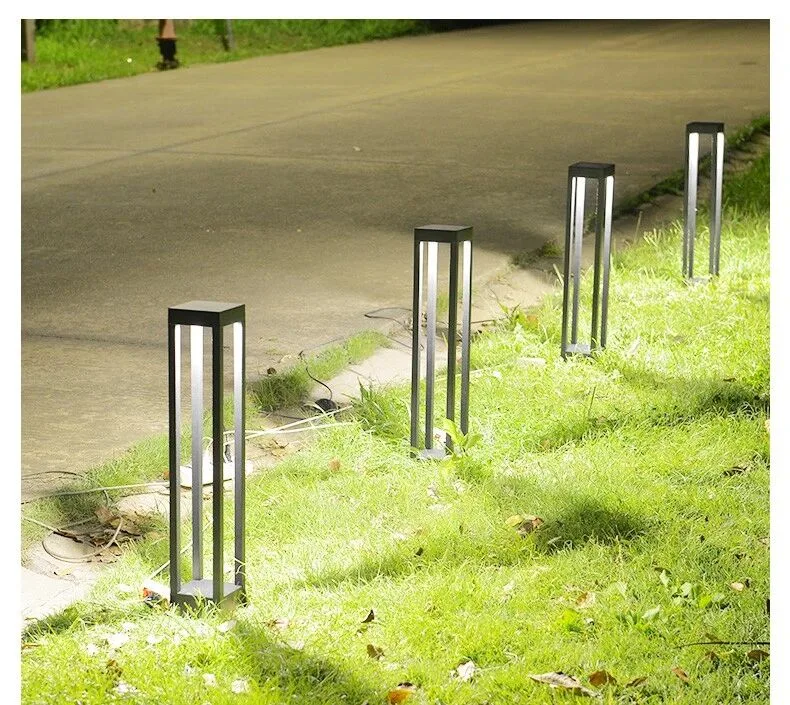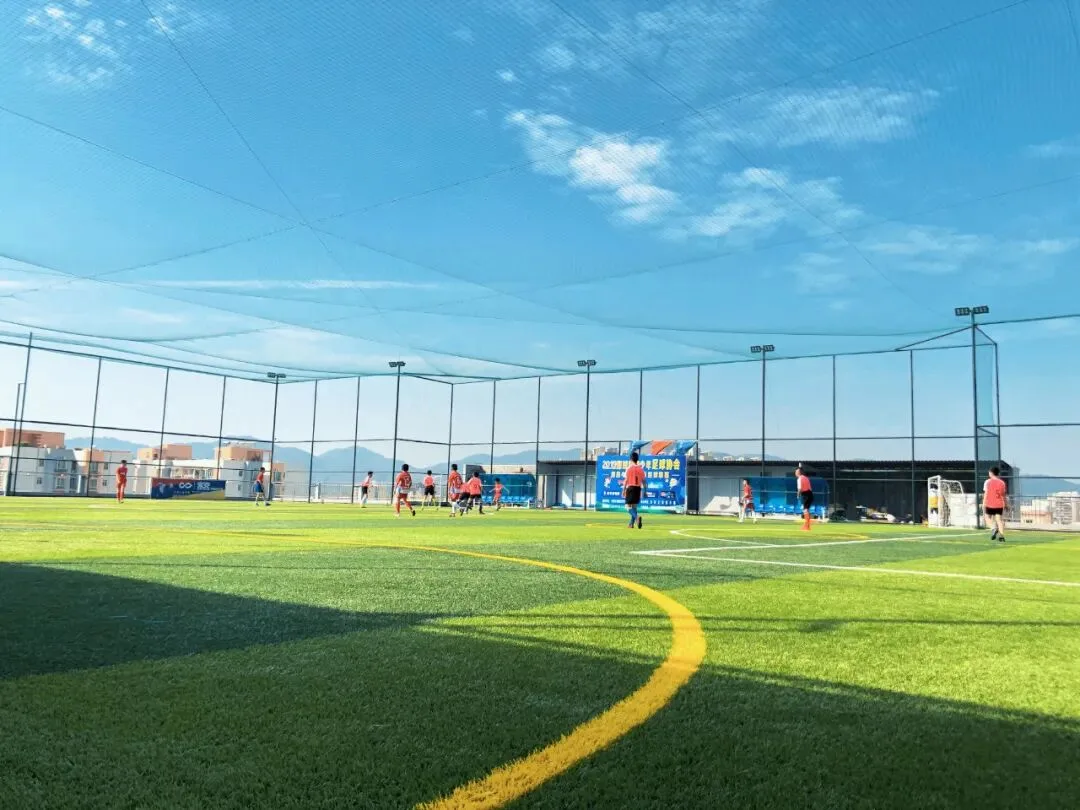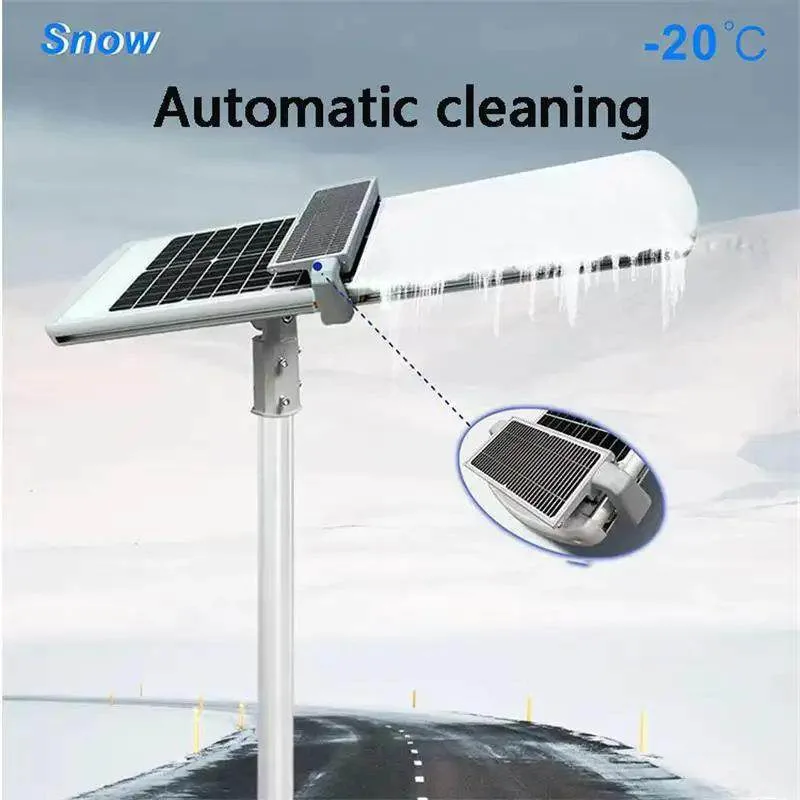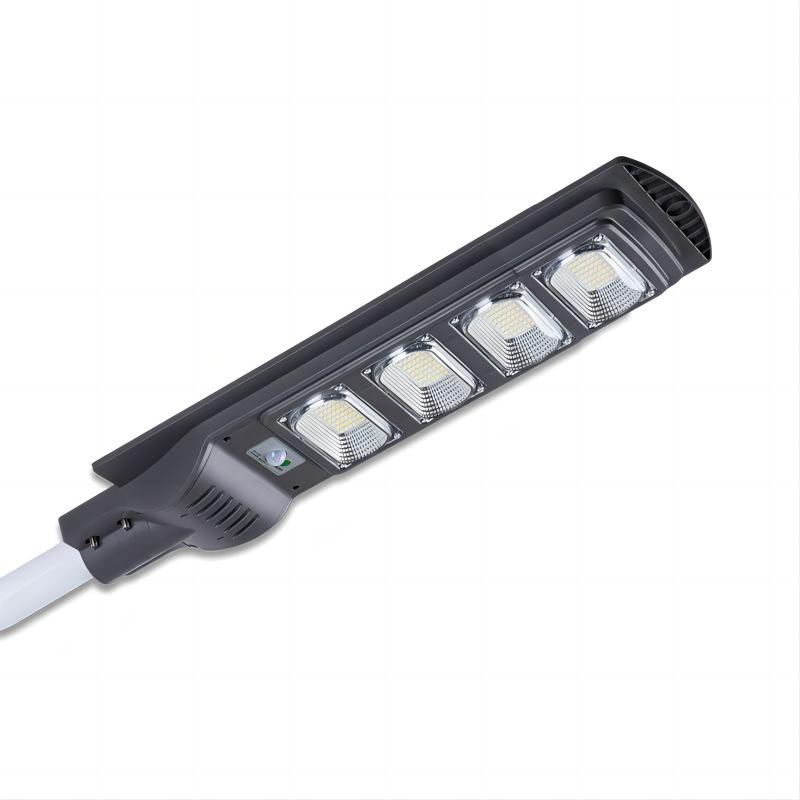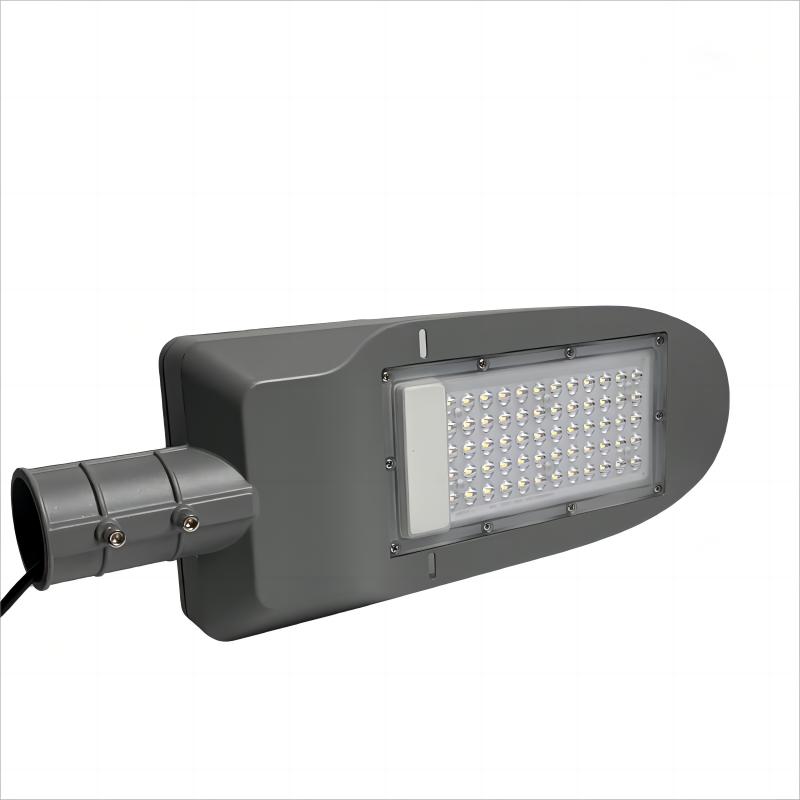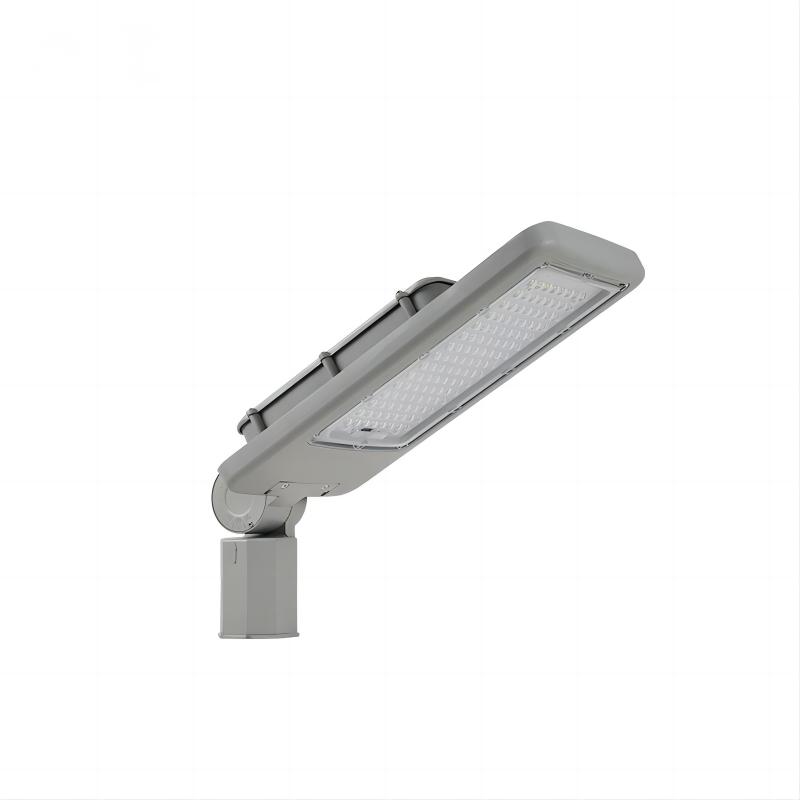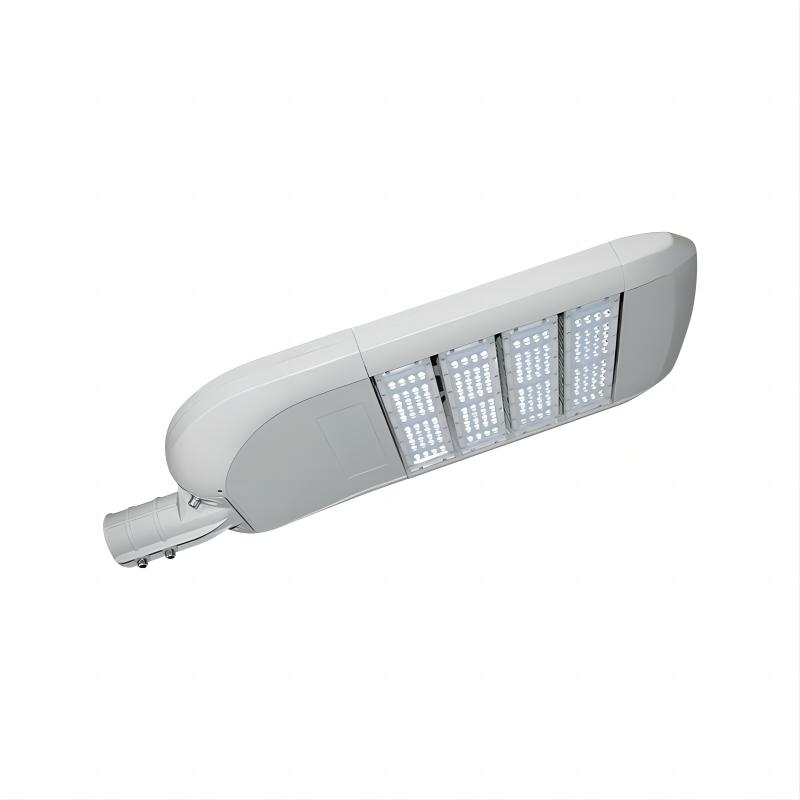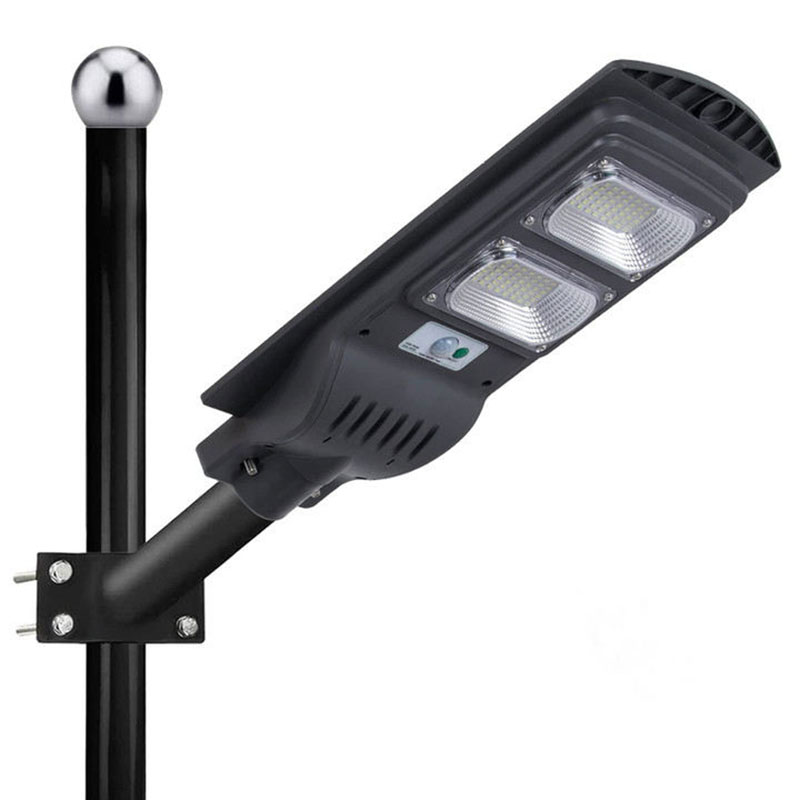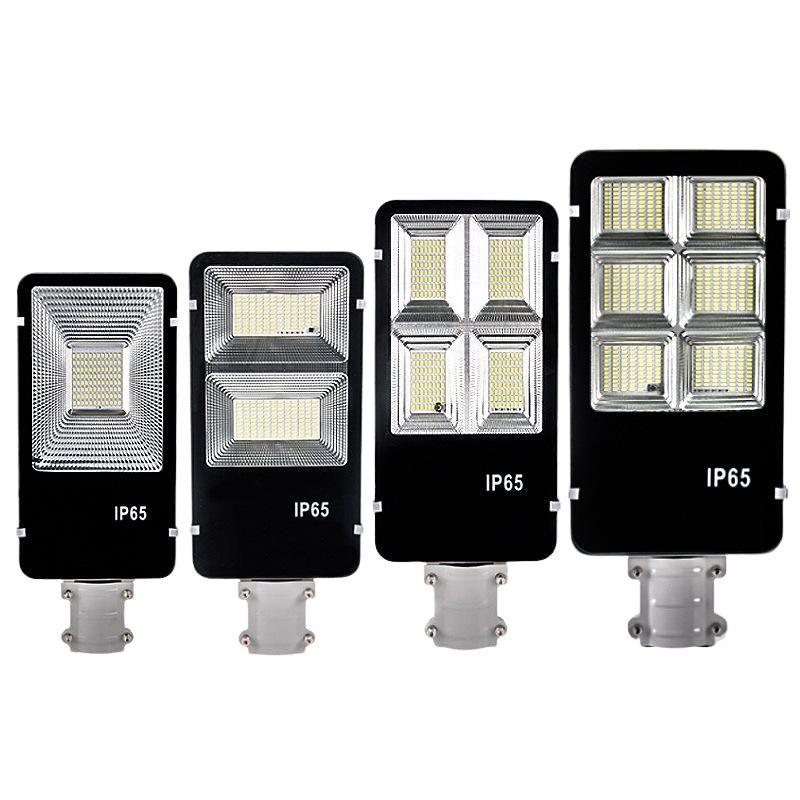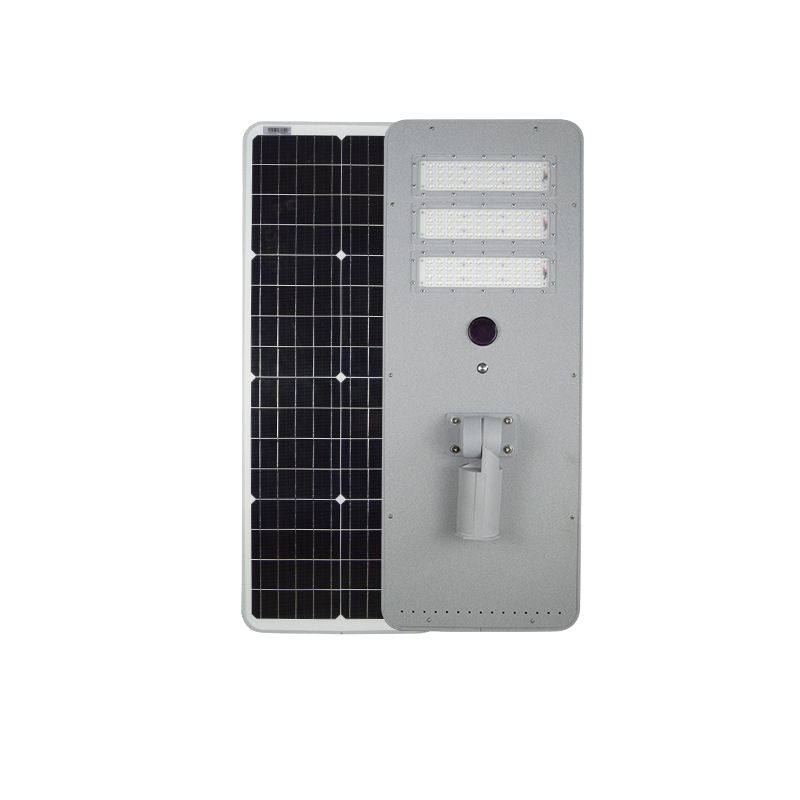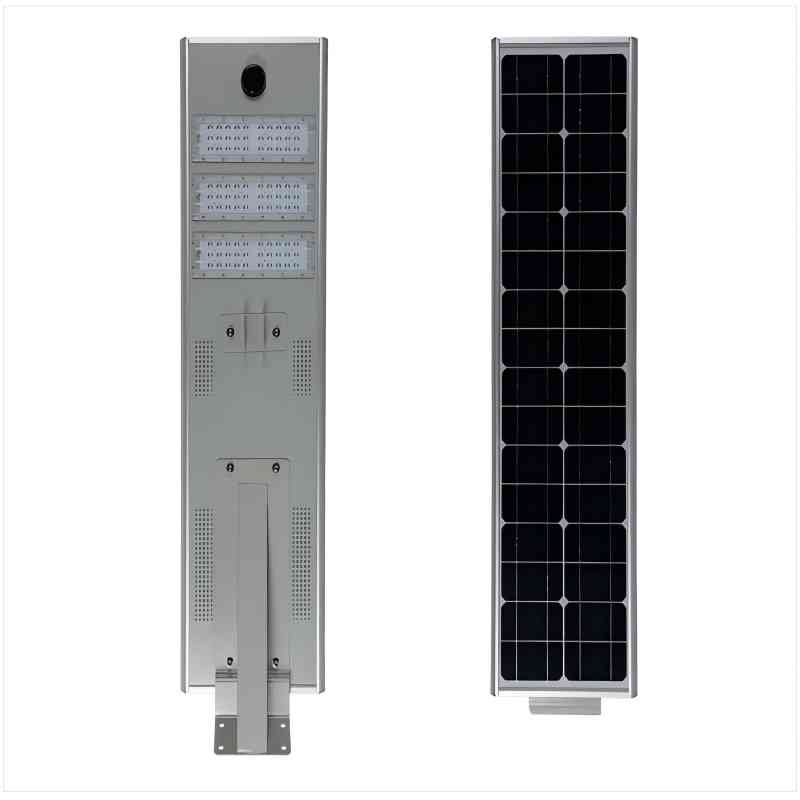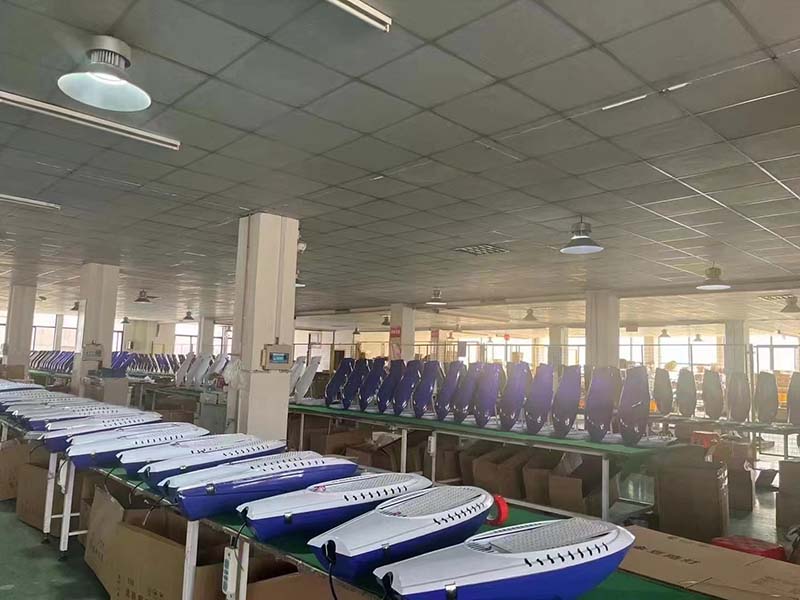Introduction to Street Lighting Evolution
Street lights have changed a lot over time. They used to be simple gas lamps, but now they are smart led street lights. This change happened because energy costs are higher, cities want safer energy streets, and people care more about the environment. Today, the best lights not only use accurate optics and save energy but also consider the best colours for led lights to improve visibility and comfort. Many of them work with a smart street light control system to adjust brightness and reduce waste.
Street Light Types and Mounting Options
Modern street lights try to balance saving energy, giving comfortable light, keeping people safe, and protecting the environment. The right lamp and led street light pole mounting depend on the road type, how much light is needed, how many lumens is a led street light, how busy the traffic is, and local environmental conditions.
Common light in street Types and Application Scenarios
led lights street: These are now the most common street lights. They can give more than 180 lumens to watts, work with smart controls, and last 50,000 to 100,000 hours. They are good for highways, main city roads, and smart city projects.
Solar streets lights: These have solar panels for street lights, solar street light controllers, and solar street lights with lithium batteries built in. They work as an off grid solar street light, cost nothing to run, and make no carbon emissions. They are good for remote places, green buildings, and areas after a disaster.
High-Pressure Sodium (HPS) Lamps: This is an older types of lights. They give bright light at first, but the color quality is poor (CRI less than 25). They have mercury and cannot use smart controls. They are slowly being replaced. They are old fashioned street lights waiting for upgrades.
Metal halide street lamp: These show colors better than HPS lamps but use more power, make more heat, give off strong UV light, and cannot work with smart controls. They are used in stadiums and older business areas.
Post-Top and Bollard Fixtures: These short lights are used for gardens and paths. They give soft light and are set low. They are used in parks, walking paths, and plazas.
Shoebox Lights: These have a box shape, give even light, and work well with smart control systems. They are used in parking lots and big open spaces.
High Mast Systems: These are set 30 C50 feet high or more. They light very large areas and are used in transport hubs, airports, docks, and stadiums.
Knowing what each street light can do is only part of the job. how high should led street lights be mounted is also very important for getting the right led street light brightness, saving energy, and keeping light comfortable to the eyes. The next part looks at common mounting types and how different lights work in each setup.
Mounting Arrangements for Optimal Coverage
Proper mounting ensures uniform light distribution and minimizes energy waste. Common configurations include:
Single-Sided Layout Overview
In a single-sided lighting layout design, residential street lamps are installed along only one side of the road. This setup is often used for narrow roads such as residential streets (12 C24 meters red line width), bicycle paths, sidewalks, and local community roads, where traffic is light and space is limited.
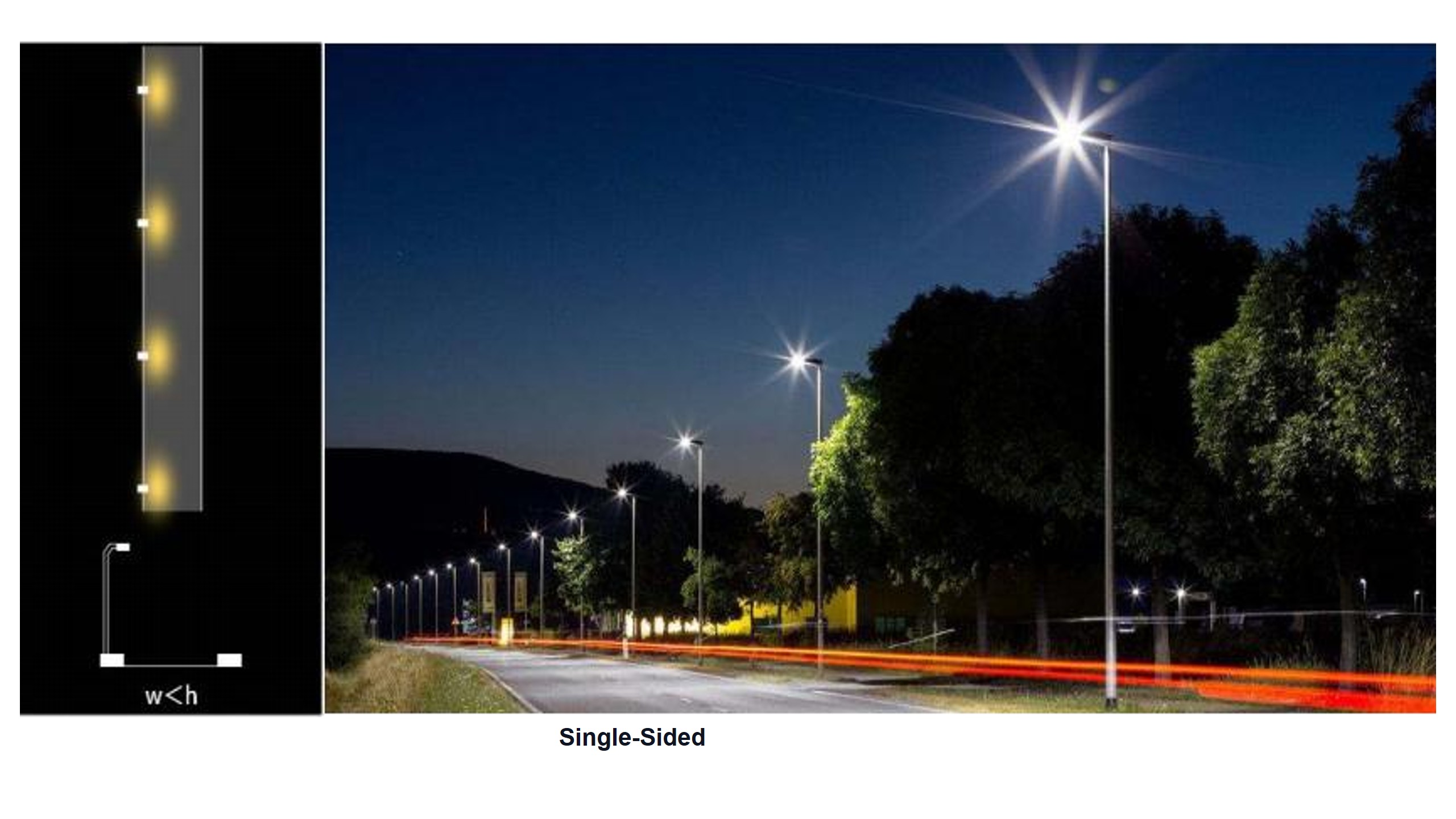
Light Distribution and Pole Setup
To ensure the best light distribution and minimize glare, IES Type II or III street light luminaires with cut off light fixtures are recommended. These provide an led street light coverage area of about 1 to 1.5 times the height of a light pole. The typical mounting height is 8–10 meters, with pole spacing of 24–35 meters, giving a 1:3 to 1:3.5 height-to-spacing ratio.
Standards and Compliance
This arrangement meets IES RP-8 for local and collector streets and EN 13201 for P-class roads. Designers should note that wider roads may have shadows on the opposite side; using auxiliary lighting or high-CRI, low-glare fixtures can help reduce this issue.
Opposite Layout Overview
In the opposite lighting layout, poles are placed on both sides of the road, directly across from each other. This setup works well for big city roads, expressways, and medium roads that are 40 to 80 meters wide, especially if they have two carriageways or a center strip. This layout gives even light across all lanes.
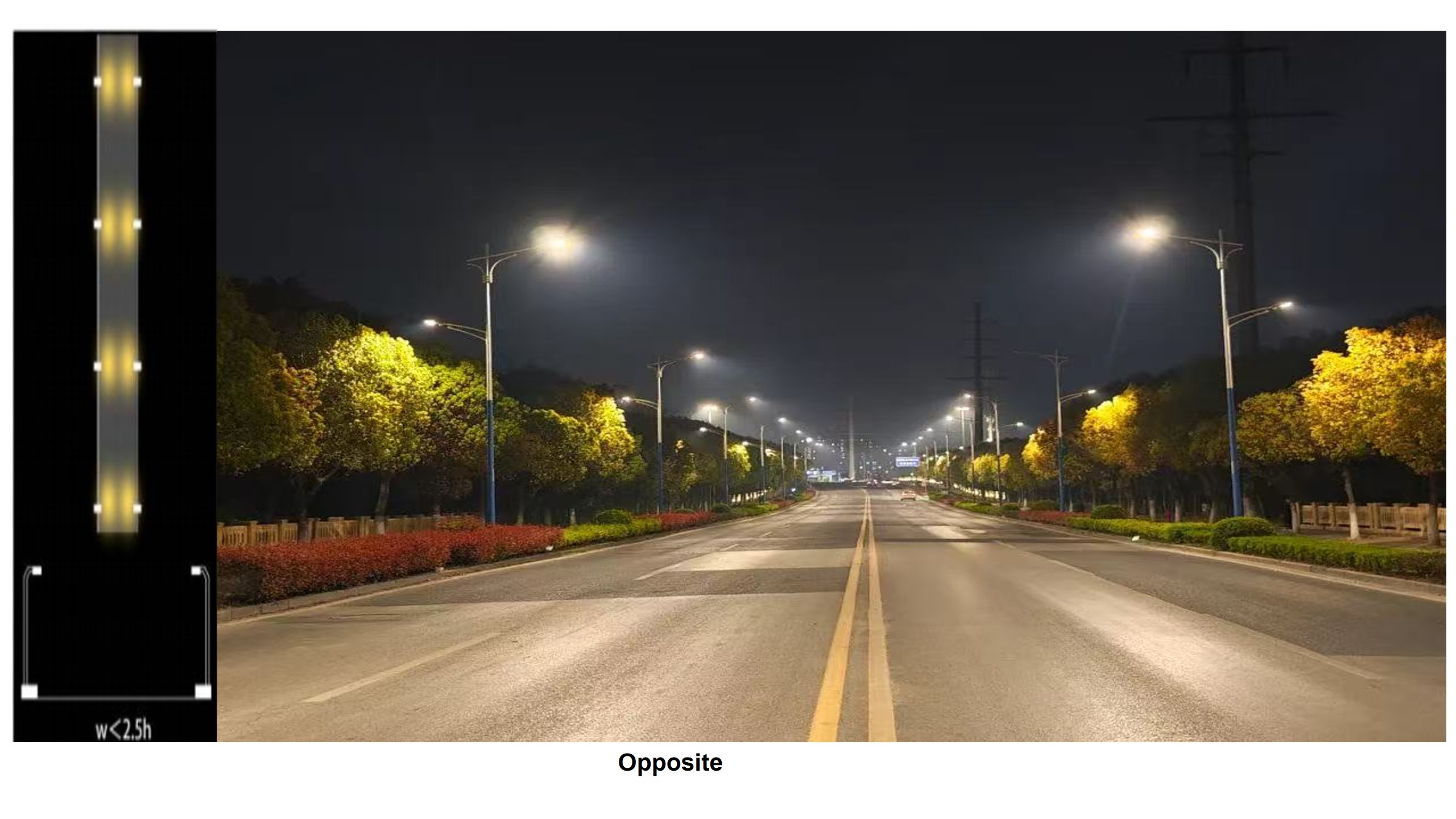
Light Distribution and Pole Setup
To get even, glare-free light,led street light reduced glare designs using IES Type III or IV optics are best. These provide a medium to wide led street light beam angle, making them good for lighting many lanes while keeping light from spilling outside the road. The typical street light height is 10 to 14 meters, with 36 to 42 meters between poles, giving a 1:3 to 1:3.5 height-to-spacing ratio. This setup follows best roadway lighting practices.
Standards and Compliance
The opposite layout is accepted by IES RP-8 and EN 13201. It is used for M3 to M5 road classes and gives high, even lighting. It often reaches a uniformity ratio of 3.0 or less, which makes driving safer and more comfortable on medium or wide roads.
Staggered Layout Overview
In a staggered lighting layout, poles are placed one after the other on each side of the road, not directly across from each other. This asymmetrical lighting helps a street lamp in the dark remove shadows and dark spots. It works well for roads with curves, trees, or objects that block a normal symmetrical setup.
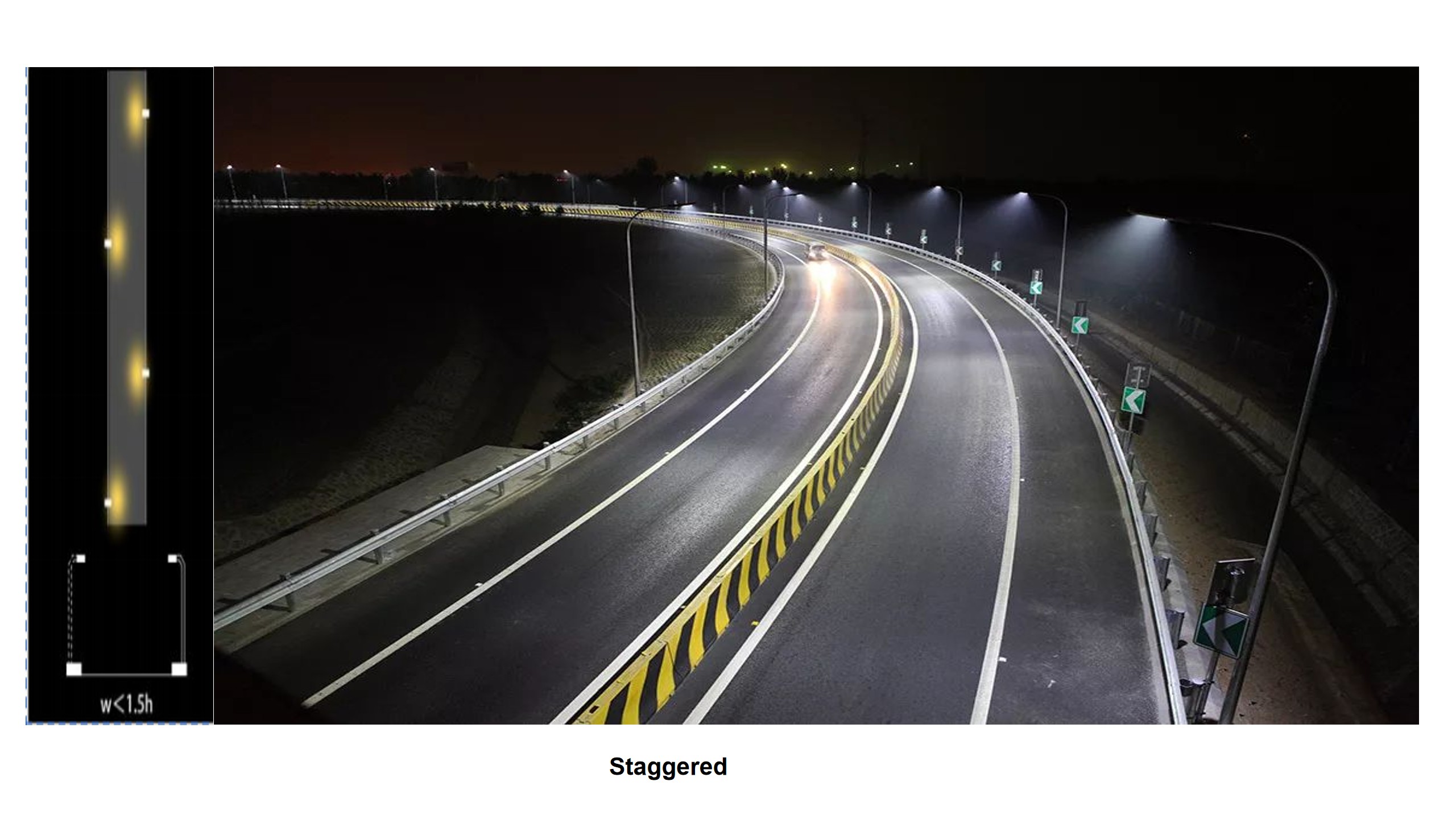
Applicable Road Types
Staggered layouts are good for city roads 30 to 45 meters wide. They are often used on curved streets, tree-lined roads, and streets with medians or side parking, where direct symmetry is hard to do.
Light Distribution and Pole Setup
To cover the road well, IES Type III or IV lights with uneven beam shapes are best. These give longer light along the road and reduce dark areas. street lamp height is usually 10 to 12 meters, with spacing of about 36 meters in an alternating pattern. This setup can give more flexible coverage than opposite layouts, depending on the road s shape.
Standards and Compliance
This layout meets EN 13201 rules for M4 CM6 roads and is supported by IES RP-8, especially for areas with trees, signs, or uneven building lines. It gives more even lighting and lowers sharp contrasts on the road.
Center-Aligned Layout Overview
In a center-aligned lighting layout, led street light poles are set in the middle of the road on the central strip. This works well for very wide roads where side poles are hard to use. It gives good light to all lanes, needs fewer poles, and makes street light maintenance easier.
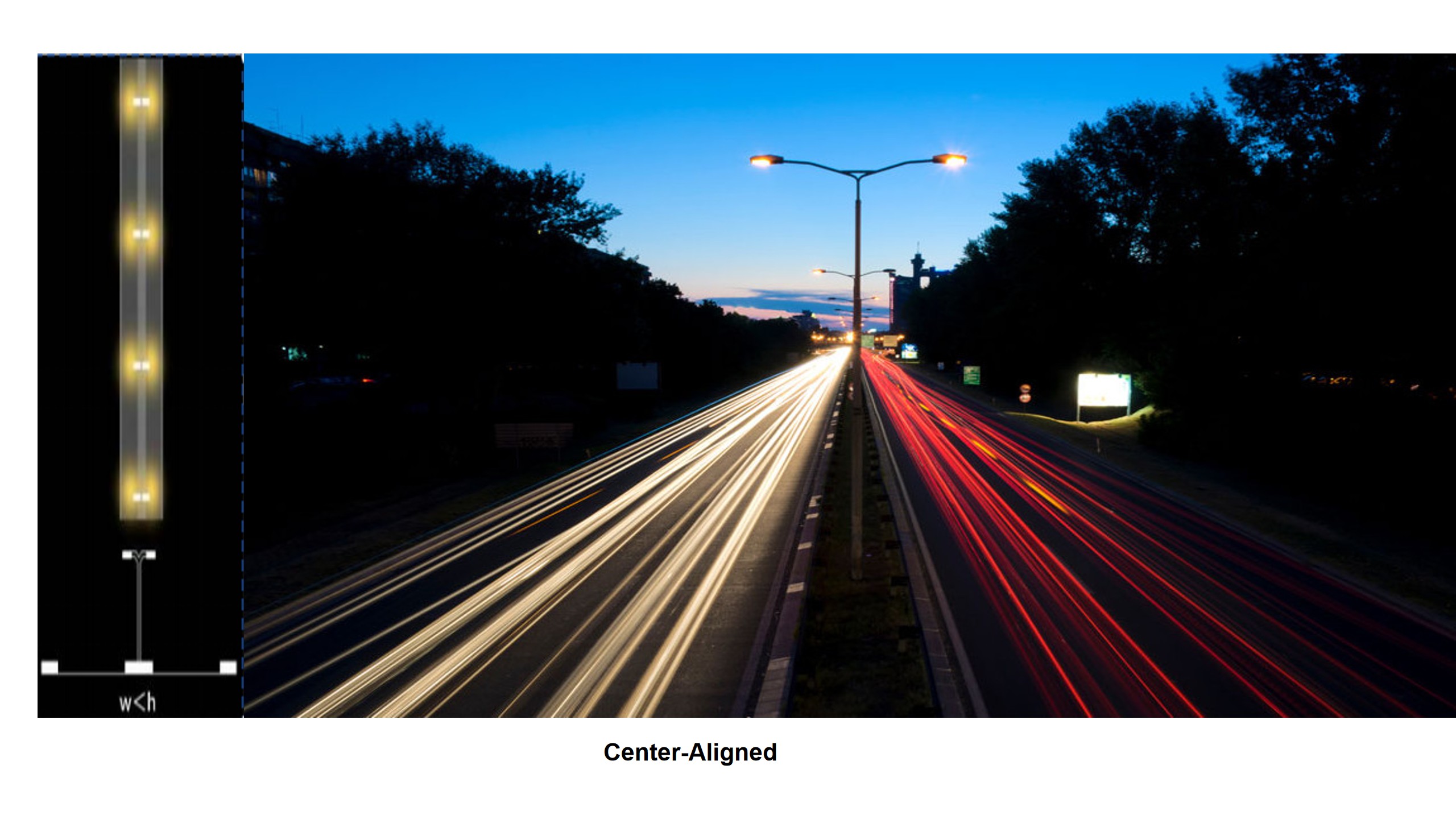
Applicable Road Types
This layout is often used on big expressways, highways 50 to 130 meters wide, or roads with 6 or more lanes. It is also good for bridges, dual carriageways, and ramps, where the middle area is easy to reach for led street light installation. For example, the distance between led street lights on 8-lane road setups often follows this center-aligned design to give even coverage.
Light Distribution and Pole Setup
To light the road evenly, IES Type IV or V lights are best because they have wide, even beams. Pole height is usually 12 to 18 meters, with 36 to 48 meters between poles. A height-to-spacing ratio of 1:3 to 1:4 helps save energy and reduce dark spots on wide roads.
Standards and Compliance
Center-aligned lighting meets global rules like EN 13201 for M1 CM3 roads and IES RP-8 for major freeways. It also follows ASHRAE 90.1, helping reduce glare issues endemic to led street lights, cut side glare, and lower lighting power use, which improves both safety and energy savings. Once the pole layout is set, the best results come from matching the light beam design to the road shape and lighting needs.
Lighting performance, intelligent control and standard compliance
Optical Design and Beam Control
To get even light and use energy well for road lighting, street LED pole lights often use special lenses and an led street light reflector to control the beam angle and spot shape. A wide angle led street light can cover more area, but if the led street light light source is not spread out, the light on the road will form one big round spot, as shown in the picture below.
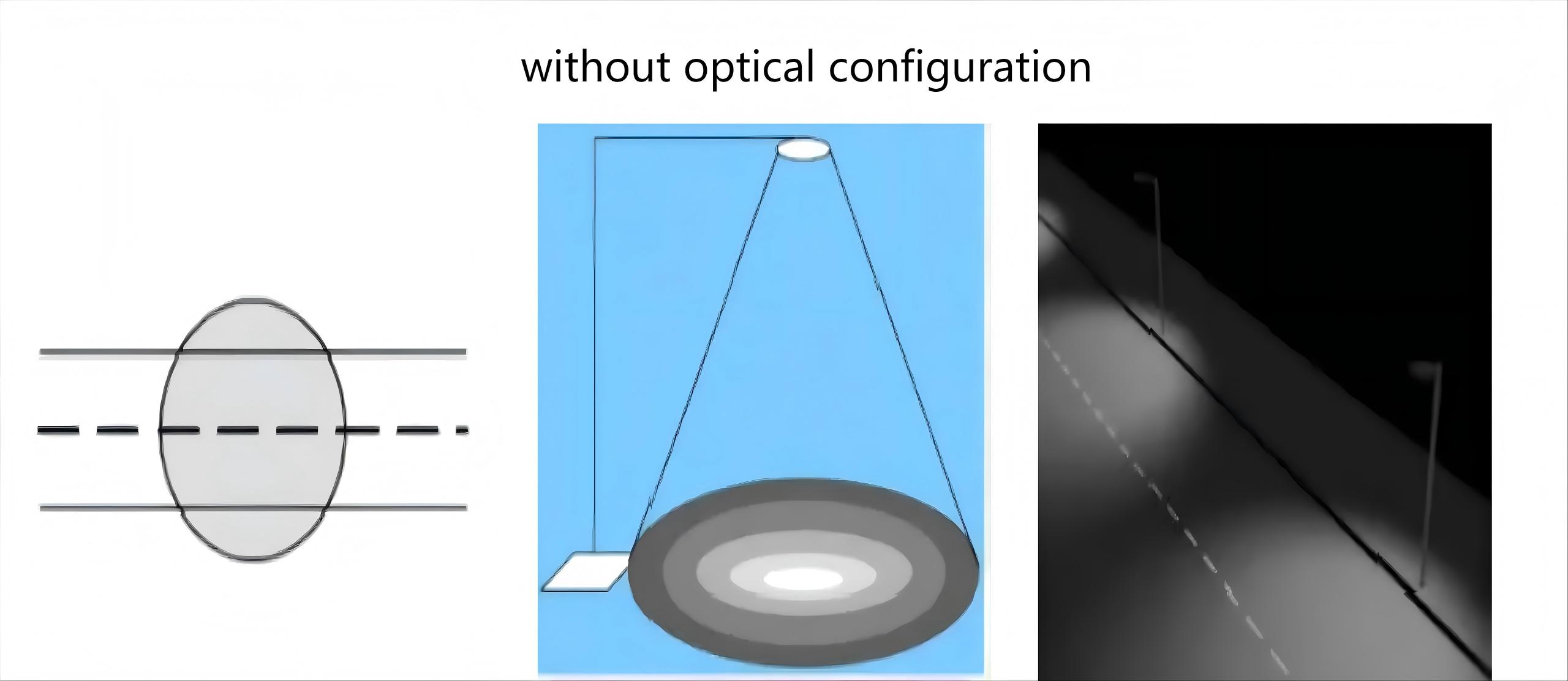
It can be seen that some dark areas and shadows are easily formed on the road surface, which not only causes energy waste, but also brings great hidden dangers to driving safety at night.Therefore, we need to distribute the light of LED street lamps. The ideal situation is that the light shape or spot formed by the output light of LED street lamps shining on the road is rectangular. The light shape of street lamps is close to the rectangle (bat wing), which can make better use of the shape of the road itself and make the street lamps more comfortable.In engineering practice, the North American IESNA standards (Types I CV) are often referenced, and symmetrical or asymmetrical light patterns are selected based on the lighting layout.
Smart Controls and Adaptive Lighting: Modern LED streetlights typically support:
Motion sensing
Motion Sensing Street Lights save about 30% C50% energy, depending on the place and how they are controlled. They use PIR (Passive Infrared) or microwave sensors to keep lights dim (about 20%) when no people or cars are around, and make them bright (80% C100%) when movement is detected. This also makes the lights last longer and lowers led street light repair costs.
Dimming Curves
A sensor street lamp can change brightness based on time or daylight levels. This cuts power use during off-peak hours. When used with light sensors and smart control systems, this can save more than 30% energy, depending on the design and place.

Photosensitive Units
Photocell light control can tell when it is day or night. They turn lights on at night and off in the day to stop waste. Systems that use daylight can save about 20% C60% energy, with many studies showing an average of about 24%.
Remote Monitoring
IoT systems can collect data, watch light status, control lights, and send alerts. This helps fix problems faster, reduces repair work, and improves energy use.When added to the normal energy savings from LEDs, these features motion sensing, time-based dimming, automatic on/off, and remote control can save an extra 20% C30% power. In some cities and projects, using several of these together can save a total of 60% C80% energy.
Standards & Compliance
IESNA C Light distribution and illumination levels.
EN 13201 C European roadway lighting requirements.
ASHRAE 90.1 C Energy performance benchmarks.
Dark Sky Guidelines C Light pollution mitigation.
Quality and Longevity
IP65/IP66 weatherproofing.
LM-80 tested LEDs.
Surge protection.
Warranties up to 10 years.
Choosing the Right Street Light for Your Project
Practical checklist:
Application type (road, residential, commercial)
Distribution type and optics
Mounting height & layout
Grid vs. solar power
Smart control needs
Budget & maintenance goals
Conclusion
Modern street lighting demands a balance of technology, design, and sustainability. The shift from legacy HPS to advanced solar-integrated LED systems with smart controls represents more than just an upgrade it s a transformation in how cities approach safety, energy efficiency, and environmental stewardship. By aligning lighting strategies with evolving urban needs, municipalities and developers can create infrastructure that not only meets today s requirements but also adapts to tomorrow s challenges.
FAQs
Q1: What is the most energy-efficient type of street light for urban roads?
LED street lights are currently the most energy-efficient option, with luminous efficacy reaching 150 C180?lm/W and lifespans of 50,000 C100,000 hours. When paired with smart controls such as motion sensors and dimming schedules, they can deliver 50 C70% energy savings compared to traditional HPS or MH lamps.
Q2: How do different street light mounting layouts affect lighting performance?
Mounting layouts such as single-sided, opposite, staggered, and center-aligned impact coverage, uniformity, and glare control. For example, opposite layouts with Type III optics offer balanced illumination for wide roads, while center-aligned layouts with Type V optics are ideal for highways and large medians.
Q3: What smart control features can reduce street lighting energy consumption?
Common features include motion sensing (30 C50% savings), adaptive dimming based on traffic flow, daylight harvesting (20 C60% savings), and remote monitoring. When combined, these features can achieve total energy reductions of over 60 C80%.
Q4: Which international standards regulate street lighting design?
Key standards include IESNA for light distribution, EN 13201 for European roadway lighting requirements, ASHRAE 90.1 for energy performance, and Dark Sky guidelines for light pollution control. Compliance ensures safety, efficiency, and environmental responsibility.
Q5: How to choose the right street light for my project?
Consider the application type (roadway, residential, commercial), distribution type and optics, mounting height and layout, power source (grid or solar), smart control needs, and lifecycle budget. Consulting with experienced manufacturers or lighting designers can optimize both performance and ROI.
